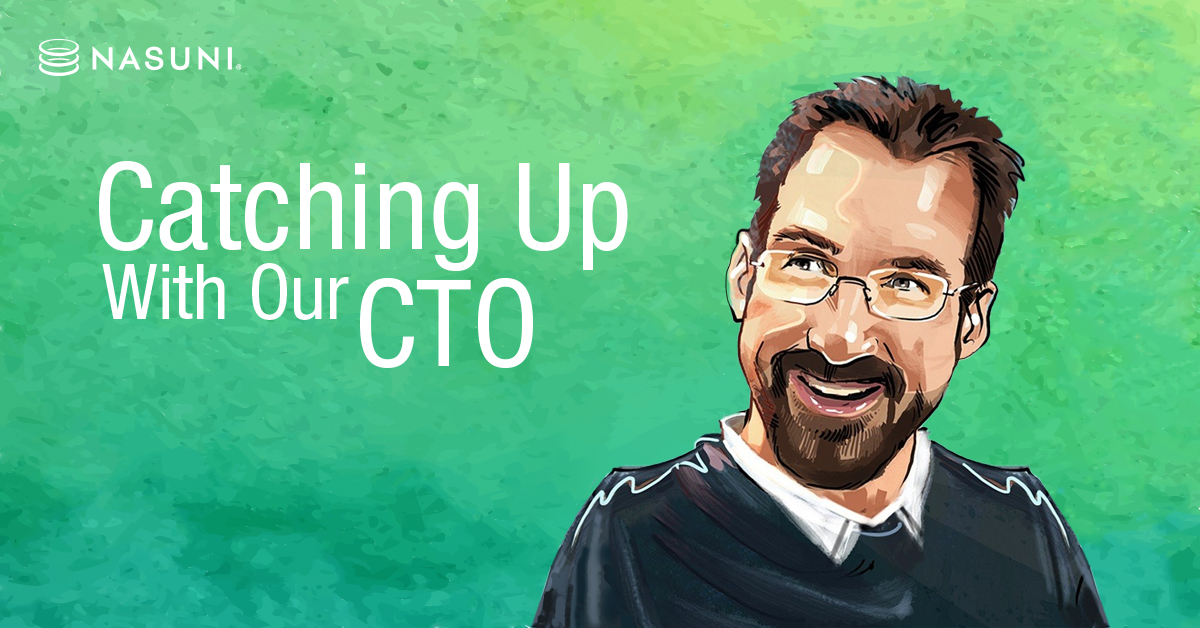Listening in the Field
April 06, 2021 | Andres Rodriguez
Recently I was asked about my role as Chief Technology Officer at Nasuni, and the question brought me back to the reason our content team suggested I start writing this column in the first place. For years, I’ve been meeting with customers and prospective clients to discuss their technology needs, then sharing my impressions with Nasuni’s leadership team in quick, concise emails. I call them Field Notes, and I’ve come to realize that these impressions, and the interactions that inspired them, have been a key driver in the evolution of our technology.
A good CTO has to be a strong promoter of his or her ideas. You have to be an impresario for your big idea. As my colleagues and friends will tell you, I do not struggle in this area. To be effective a CTO has to find ways to push the boundaries of your technology, too, and think about how to advance it beyond the next few versions. Here at Nasuni that means planning to ensure that we have the leading file system not just in 2021 or 2022, but out to 2030 and beyond. Yet your solution also needs to help customers today. Our technology has to address the current, acute pain of large enterprises. Otherwise we won’t be around in 2030.
This is why I value those interactions with prospective and current customers and the associated Field Notes. Some conversations are validation points. Others are stress tests. When you’re put in a physical or virtual room with a half-dozen or more very smart and experienced people who are trying to poke holes in your technology, you find out whether your approach is really defensible. You cannot charm your way through these sessions. When we do receive criticism, I listen, so that I have a better sense of where our technology might be falling short. The sessions can be a great opportunity to float new ideas or approaches as well.
During the past year, these field meetings have also generated or validated several ideas about cloud storage within the modern enterprise.
- Architecture matters. I’m often asked to explain the core differences between our cloud-native file system and those of our competitors. Many times these conversations are with IT leaders who have already tested a cloud file storage solution and run into problems around scale, reliability, or performance. They know their stuff, and when I explain our hub-and-spoke architecture, with the API at the hub, and why we built a file system that ensures both file data and metadata scale in the cloud, they understand. They see the difference and this validates our approach.
- Performance matters. At one of the companies I met with this year, the CFO listed the performance of our cloud VM as one of the top three priorities. Yes, we knew this was important, and now that more companies have shifted to a WFH model, more of our customers are depending on cloud-based VMs to extend file access to their end users. But this was the CFO prioritizing the metric. That demonstrated just how critical this issue has become. The meeting inspired us to dedicate more cycles to further improve the performance of our cloud VMs and to lay out some ambitious but achievable technology goals for this year and the next.
- Faster migrations mean faster ROI. When a migration goes more slowly than anticipated, old technology cannot be retired as quickly, and the enterprise cannot remove these costs from their books and start realizing all the efficiencies of a cloud infrastructure. I’d heard this from one of our large global enterprise customers, and while it was not a complete revelation, it did inspire us to rearrange our priorities. In my meetings with prospective customers, it became apparent that the faster we could move their file data to the cloud, the more attractive our offering would be. So we prioritized and developed a file migration tool to accelerate the process — and now we’re getting companies off traditional NAS and into the cloud faster than ever.
- Professional services are essential. The pressure to lift and shift everything into the cloud can lead to strain and inefficiencies. We developed the file migration tool to quicken things, but it’s not always that simple, and it sometimes requires the help of experienced, qualified experts who’ve done this at scale with the largest companies in the world. I’m a promoter of the idea that software is eating the world. Automation is essential to efficiency. But whenever I meet with customers who have engaged our Professional Services team, I’m reminded that experts still matter. Qualified, experienced, deeply knowledgeable and responsive individuals like those on our Professional Services team can make an enormous difference in transitioning large enterprises to the cloud.
As a CTO, the simple art of listening to customers can also be inspirational. I remember one conversation last year in particular. The head of IT infrastructure at a global enterprise told me how consolidating their old file servers into NetApp more than a decade ago was game changing, and how he was looking for a similarly revolutionary storage technology today.
When I hear something like that, I smile. That’s Nasuni.
Jim Liddle shares how Nasuni is educating customers on how to create customized Microsoft Copilot experiences with AI business tools that use a customer’s unstructured data set to unlock further business insights and revenue streams.
Lance Shaw shares insights from Gartner’s ‘Market Guide for Hybrid Cloud Storage’ as well as their projections for the market over the next few years.
Anne Blanchard shares trends and takeaways from Gartner’s Infrastructure, Operations Cloud Strategies conference around the push for enterprise organizations to move to a hybrid cloud storage platform.


